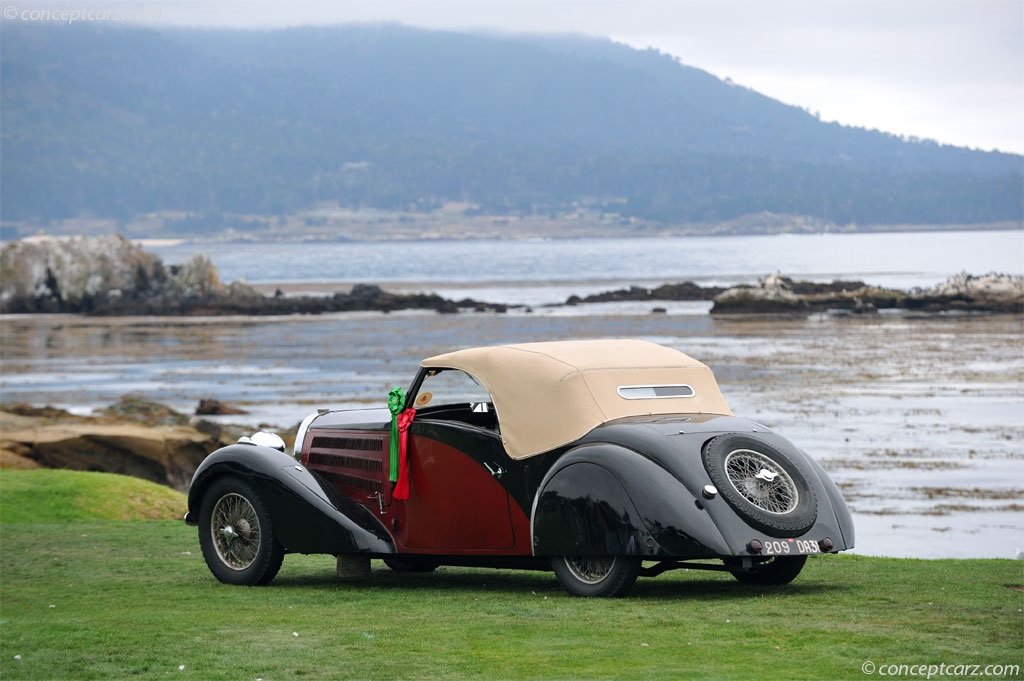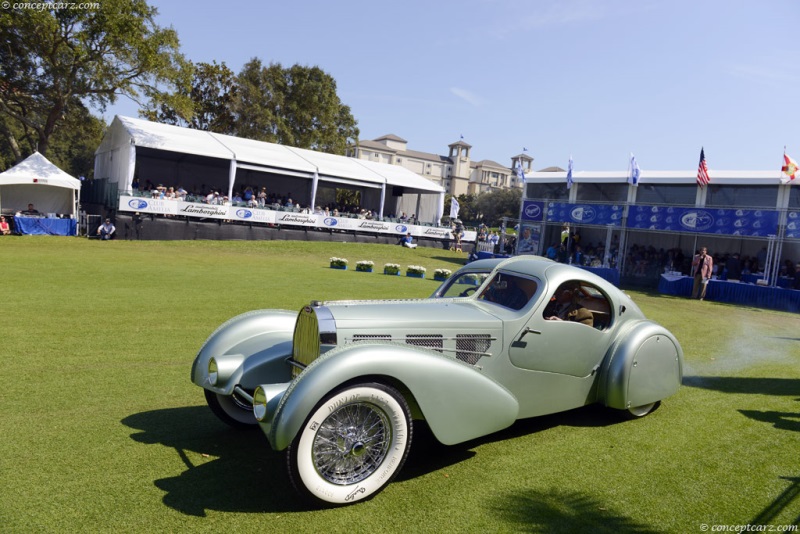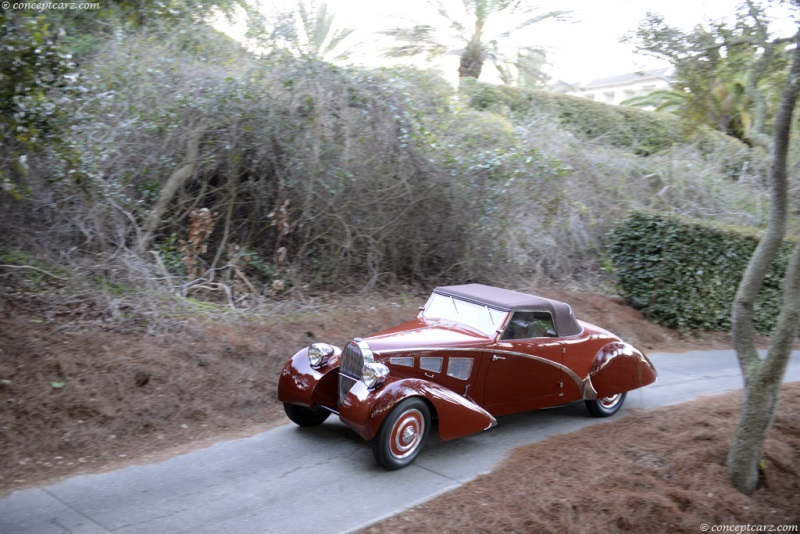1934 Bugatti Type 57 Navigation
The Bugatti Type 57 was introduced in 1934 and would form the mainstay of the company's production through the 1930s. It took various forms, from the Le Mans-winning 'Tank' sports racer which ultimately claimed the life of Jean Bugatti while testing the car on closed roads in 1937, to elegant road-going transportation. The Type 57 was the first new model constructed under the direction of Jean and was endowed with numerous features that were new to Bugatti. Coachwork was created by the factory or on commission by outside coachbuilders. Much of the commercial success of the Type 57 was attributed to Jean Bugatti's elegantly flowing and graceful designs that were bestowed upon many examples. 
Drophead Coupe by James Young
Chassis #: 57169
Engine #: 101
View info and history
Auction entries : 1The Bugatti Type 57 was more than just a new model for the company, it was a new direction that introduced many new innovations and features. Prior Bugatti models wore singular coachwork while the pioneering Type 57 used numerous body styles on one chassis. Jean Bugatti was just 23 years of age in 1932 when he was placed in charge of the Type 57's design team. The heart of the Type 57 was the 3,257cc displacement eight-cylinder engine which used a crankshaft that ran in five main bearings, finger cam followers that minimized side thrust on the valve stems, and had a dimension of 72 x 100mm. The camshafts were driven by a line of helical-tooth gears at the engine's rear with a further crankshaft bearing behind them (The Type 50 and 51 used bevel gears at the front of the engine). The engine was based on the unit powering the Type 49, but with 'double,' instead of 'single,' overhead camshafts. Following World War II, the Type 57 chassis and engine would form the basis for the Type 101. The Type 57 engine was smaller than the one powering the previous Type 41 Royale and the Type 50 - both of which were Paragons on the road and brought the company notoriety, but they fell short of providing financial success. The Type 57 - in prototype form with a 2.8-liter displacement - was nearly half the displacement of the Type 50. The production version displaced just under 3.3 liters. 
Aravis Drophead Coupe by Paul Nee
View info and historyThe use of a transmission fixed to the engine crankcase and a single plate clutch marked another Bugatti 'first.' The four-speed gearbox had constant mesh on the top three gears, and initially, the Jean-designed suspension system incorporated an independent front setup using transverse leaf springs. Only two examples received this configuration before 'Le Patron' (Ettore Bugatti) insisted it be replaced with a conventional Bugatti setup incorporating hollow tubular live axle with semi-elliptical front and reversed quarter-elliptical rear leaf springs. Stopping power was provided by cable-operated mechanical drum brakes. Lockheed hydraulically actuated brakes were added in 1938, again, much to Ettore's protest. The lightweight but expensive aluminum-spoked wheels and brake drums were replaced in 1938 with Rudge-Whitworth center-lock wire wheels and separate brake drums.The wheelbase measured 130 inches and had a 53-inch track. Early examples had the engine bolted directly on the ladder frame. In 1936, the second series came with a strengthened chassis with the engine mounted on rubber bushings. Styling features included a smaller version of the Royale's square-bottom horseshoe grille, and the sides of the engine compartment had thermostatically controlled shutters. Body styles initially offered for the Type 57 included the four-seater, two-door 'Ventoux', the four-door 'Galibier,' and the two-door 'Stelvio' convertible. These three body styles were named after mountain peaks in the Alps, and unlike the 'Galibier' and 'Ventoux,' the 'Stelvio' was designed by the French coachbuilder Gangloff. The fourth body style offered by the factory was the two-seater coupe called the 'Atalante.' The Atalante was the most exclusive of the three and it was the most expensive.
Aerolithe
Chassis #: 57104
View info and historyThe Bugatti Type 57 was in production from 1934 through 1940, with a total of 710 examples (of all variants) built during that time. The Type 57C was a racing car with 96 examples built between 1937 through 1940. Its 3.3-liter engine which it shared with the road-going Type 57 developed 160 horsepower with the help of a Roots-type supercharger. The Type 57S/SC was a 'lowered' version equipped with a supercharger. The 'S' represented 'Surbaissé' ('Lowered') and the 'C' for 'Compresseur.' Distinguishable features included mesh grilles on either side of the engine compartment and a V-shaped dip at the bottom of the radiator. The lowered stance was accomplished by passing the rear axle through (rather than under) the rear frame. To wedge the engine under the new low hood, a dry-sump lubrication system was installed.
by Daniel Vaughan | Jul 2021
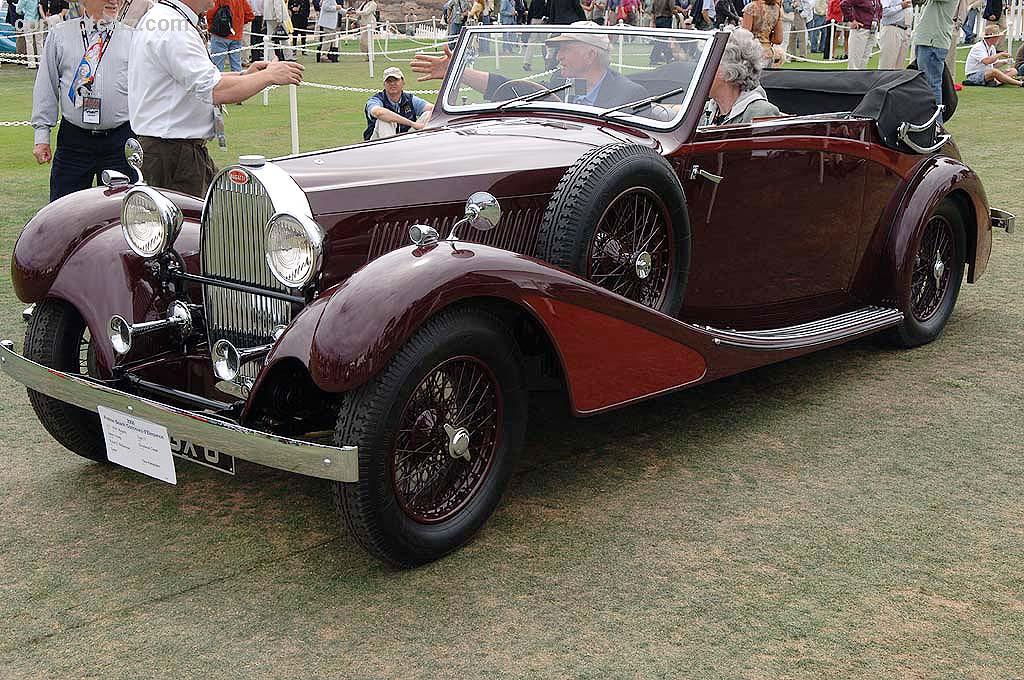
Drophead Coupe by James Young
Chassis #: 57169
Engine #: 101
View info and history
Auction entries : 1
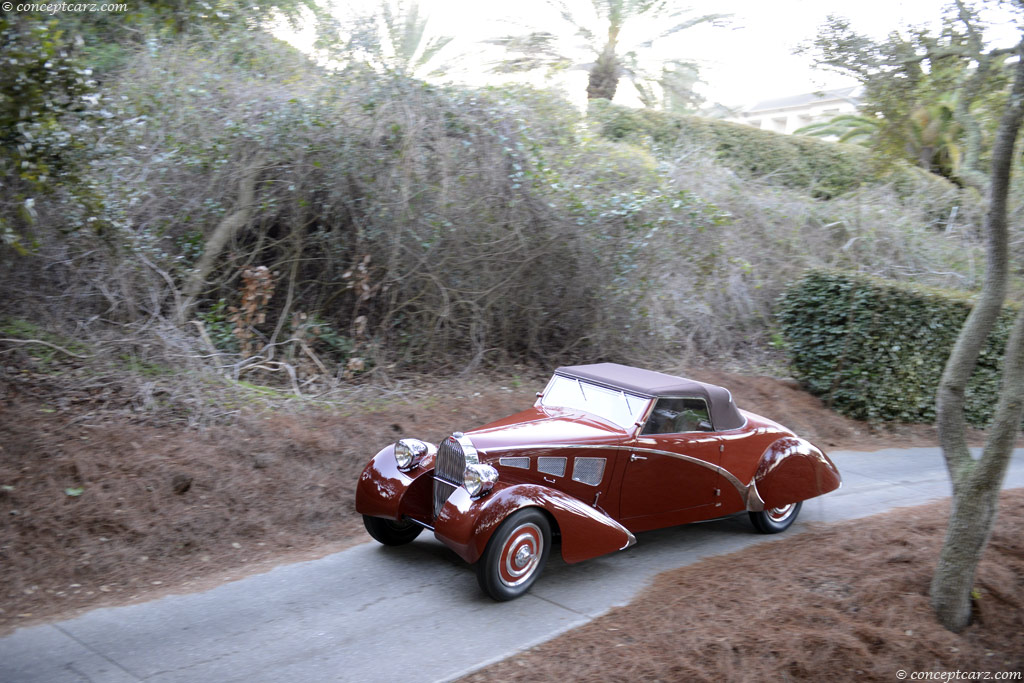
Aravis Drophead Coupe by Paul Nee
View info and history
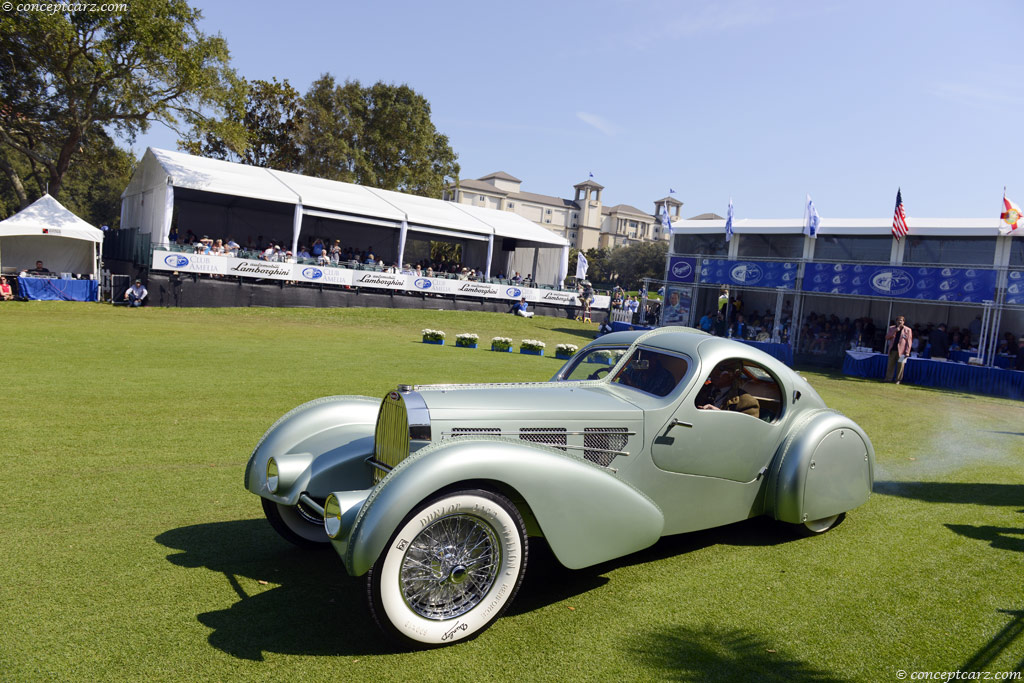
Aerolithe
Chassis #: 57104
View info and history
by Daniel Vaughan | Jul 2021
Related Reading : Bugatti Type 57 History
Many manufacturers during this time produced multi-purpose vehicles that could be driven to a race track, raced, and then driven home. The Bugatti Type 57, however, was solely a road-going vehicle and is considered the most celebrated non-racing Bugatti. Even though the Type 57 was strictly a road-going vehicle, a racing version was created for the 1937 24-Hours of Le Mans race. This vehicle, based....
Continue Reading >>
Continue Reading >>
Related Reading : Bugatti Type 57 History
Ettore Arco Isidoro Bugatti was born in Milan, Italy in 1881. His father, Carlo, was a furniture designer of some fame. The fathers brother, Rembrandt, was a gifted sculptor of animals. When he was old enough, Ettore attended the Brera Academy of Art where he studied sculpture. Soon, he turned his attention to mechanical endeavors. The first Bugatti motor car was built in 1899 though the....
Continue Reading >>
Continue Reading >>
- 1934 Bugatti Type 57 Menu
- Article
- Image gallery
- Valuation
- Specifications
- Profiles
- Production figures
1934 Bugatti Type 57 Vehicle Profiles
Recent Vehicle Additions
Performance and Specification Comparison
Type 57 Specification Comparison by Year
Year
Production
Wheelbase
Engine
Prices
Related Automotive News

Bentley Bonanza! Two Exceptional Collections Head For RM Sotheby's Annual London Auction
Two exceptional collections will be offered at RM Sothebys annual London auction at The Peninsula London on 2 November
The Best of British Collection features many fine British icons from Rolls-Royce, Bentley, and Aston Martin
...

Prestigious European Classics, Including Exceptional 1933 Bugatti Type 55 Roadster, Added to Gooding & Company's Pebble Beach Auctions
A selection of highly desirable concours-quality offerings from Europes finest automakers, including Bugatti, Bentley, Alfa Romeo, and Peugeot, to cross the auction block at Pebble Beach next month.
Internationally acclaimed auction house Gooding...

Past Best of Show Winners at The Pebble Beach Concours d'Elegance
overview1
The 70th anniversary of the Pebble Beach Concours dElegance was celebrated with a spectacular display of previous Best of Show winners. Thirty-seven examples graced the showfield and many were still with the same owners who raised the trophy...

Coachbuilding – New Interpretation Of A Long-Established Tradition
Bugatti has been focused on delivering custom-tailored cars and extraordinary individualisation for 110 years
Since Bugatti was founded 110 years ago, its vehicles have been beyond compare – both technically and aesthetically superior. As company...

Gooding & Company is Honored to Present a One-off Supercharged Mercedes-Benz
High-Style Highlights Include The 1928 Mercedes-Benz Type S 26180 Sports Tourer for Sale for the First Time in 53 Years, The 1939 Bugatti Type 57C Cabriolet with the Final Type 57 Chassis Number, The 1937 Maserati 6CM Formerly the Property of Racer...
